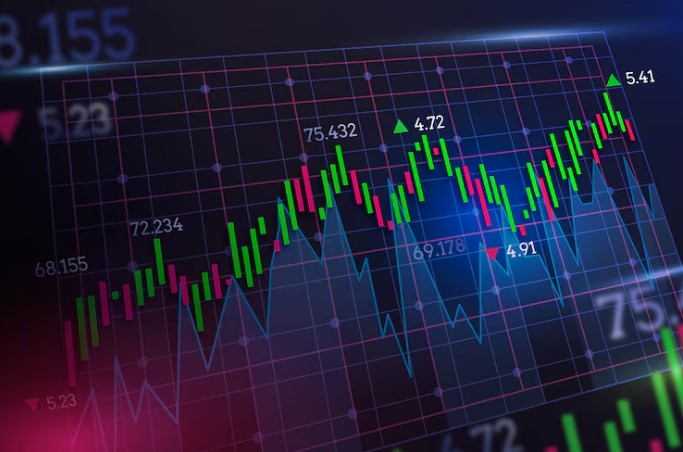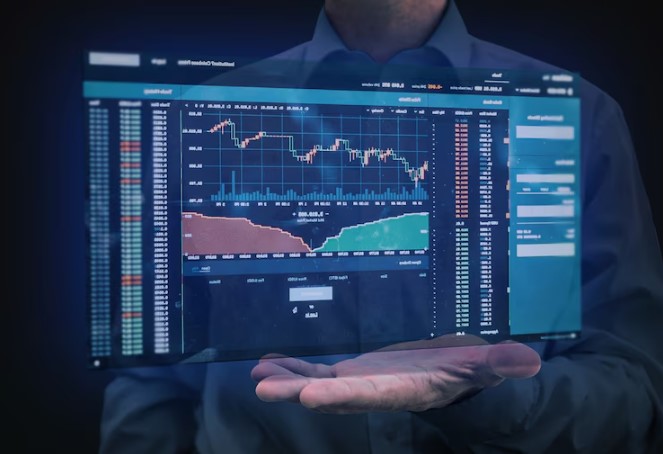Decentralized applications, or dApps, represent a paradigm shift in software development and utilization. Built on blockchain technology, dApps offer a range of benefits, from increased security and transparency to enhanced user control and censorship resistance. In this article, we’ll explore the concept of dApps, their key features, benefits, use cases, challenges, and the future of decentralized application development.
Understanding Decentralized Applications (dApps)
Decentralized applications, often referred to as dApps, are software applications that operate on a decentralized network, typically utilizing blockchain technology. Unlike traditional applications that rely on centralized servers and databases, dApps leverage distributed ledgers and smart contracts to achieve consensus, immutability, and trustlessness. Key characteristics of dApps include:
1.
Decentralization: dApps operate on decentralized networks, eliminating single points of failure, central control, and censorship vulnerability. Users interact directly with the blockchain, maintaining control over their data and assets.
2.
3.
Open Source: Many dApps are open-source, allowing developers to contribute, audit code, and collaborate on improvements. Open-source nature promotes transparency, innovation, and community-driven development.
4.
5.
Smart Contracts: Smart contracts are self-executing code deployed on blockchains, automating processes, enforcing agreements, and facilitating peer-to-peer interactions within dApps. Smart contracts enable trustless and verifiable transactions.
6.
7.
Tokenization: Some dApps utilize tokens or digital assets native to their ecosystems, representing ownership, utility, governance, or value exchange. Tokens enable incentives, rewards, and participation in dApp functionalities.
8.
Key Features and Benefits of dApps
Decentralized applications offer a range of features and benefits that differentiate them from traditional centralized applications:
1.
Security and Immutability: dApps benefit from blockchain’s cryptographic security, consensus mechanisms, and immutability, reducing risks of data manipulation, fraud, and unauthorized access.
2.
3.
Transparency and Auditability: Blockchain’s transparent and auditable nature ensures data integrity, transaction visibility, and verifiable history of actions within dApps, enhancing trust and accountability.
4.
5.
User Control and Ownership: Users retain control and ownership of their data, digital assets, and identity in dApps, mitigating privacy concerns, data breaches, and third-party dependencies.
6.
7.
Censorship Resistance: dApps are resistant to censorship, as they operate on decentralized networks that are resilient to interference, shutdowns, or manipulation by centralized authorities or intermediaries.
8.
9.
Global Accessibility: dApps enable global access and participation, allowing users worldwide to engage in peer-to-peer transactions, decentralized finance (DeFi), token economies, and collaborative platforms.
10.
Use Cases and Applications of dApps
Decentralized applications have diverse use cases across industries, sectors, and functionalities, including:
1.
Decentralized Finance (DeFi): DeFi dApps offer financial services such as lending, borrowing, trading, yield farming, decentralized exchanges (DEXs), automated market makers (AMMs), and liquidity provision without intermediaries.
2.
3.
Tokenization and Digital Assets: dApps tokenize real-world assets, securities, commodities, art, intellectual property, and collectibles, enabling fractional ownership, provenance tracking, and liquidity.
4.
5.
Supply Chain Management: dApps facilitate transparent and traceable supply chains, ensuring product authenticity, quality control, logistics optimization, and ethical sourcing using blockchain’s immutable ledger.
6.
7.
Identity and Authentication: Identity dApps provide self-sovereign identity solutions, digital credentials, verifiable attestations, and authentication mechanisms, enhancing privacy, security, and user control over personal data.
8.
9.
Gaming and NFTs: Gaming dApps leverage non-fungible tokens (NFTs) for unique in-game assets, digital collectibles, virtual land ownership, provably fair gaming mechanics, and decentralized marketplaces.
10.
11.
Social Media and Content Platforms: Social dApps offer decentralized social networking, content creation, monetization, and governance models, empowering users with content ownership, rewards, and community engagement.
12.
Challenges and Considerations for dApp Development
Despite their potential, decentralized applications face several challenges and considerations that impact their development, adoption, and scalability:
1.
Scalability: Scalability remains a significant challenge for dApps, as blockchain networks must handle increasing transaction volumes, latency issues, and congestion without compromising performance or decentralization.
2.
3.
User Experience (UX): Improving UX/UI design, onboarding processes, and accessibility is essential to attract mainstream users to dApps and ensure intuitive navigation, functionality, and adoption.
4.
5.
Interoperability: Enhancing interoperability between different blockchain protocols, dApps, and legacy systems enables seamless asset transfers, cross-chain transactions, and data interoperability.
6.
7.
Regulatory Compliance: Regulatory uncertainty, compliance requirements, and legal frameworks vary globally, posing challenges for dApp developers, token issuers, and decentralized organizations seeking regulatory clarity and compliance.
8.
9.
Security and Auditing: Ensuring robust security measures, code audits, vulnerability assessments, and smart contract testing are critical to mitigate risks of hacks, exploits, and vulnerabilities in dApp ecosystems.
10.
11.
Community Governance: Decentralized autonomous organizations (DAOs) and governance structures within dApps require effective community participation, decision-making processes, voting mechanisms, and dispute resolution mechanisms.
12.
Future Trends and Innovations in dApps
The future of decentralized applications is driven by ongoing trends, innovations, and advancements that shape their evolution and adoption:
1.
Layer 2 Solutions: Layer 2 scaling solutions, such as state channels, sidechains, and rollups, improve scalability, throughput, and transaction speeds for dApps while reducing costs and congestion on layer 1 blockchains.
2.
3.
Cross-Chain Compatibility: Enhancing cross-chain interoperability and compatibility enables seamless asset transfers, decentralized exchanges, liquidity pools, and DeFi integrations across multiple blockchain networks.
4.
5.
Decentralized Identity (DID): Decentralized identity solutions and verifiable credentials enhance privacy, security, and user control over personal data, enabling seamless authentication and access management in dApps.
6.
7.
Web3 and Metaverse: Web3 technologies, virtual reality (VR), augmented reality (AR), and the metaverse converge to create immersive experiences, digital economies, decentralized social platforms, and virtual asset ownership in dApps.
8.
9.
Tokenization of Assets: Continued tokenization of assets, including real estate, stocks, intellectual property, and governance tokens, unlocks liquidity, fractional ownership, and investment opportunities in dApp ecosystems.
10.
11.
Regulatory Innovation: Regulatory clarity, sandbox environments, regulatory sandboxes, and industry collaborations drive innovation, compliance, and responsible growth in dApp development and adoption.
12.
Conclusion
Decentralized applications (dApps) represent a transformative shift in software development, offering decentralized, secure, transparent, and user-centric solutions across various industries and use cases. As dApps continue to evolve, addressing scalability, UX/UI challenges, interoperability, security, regulatory compliance, and community governance is crucial for their widespread adoption and impact on the future of technology, finance, governance, and digital ecosystems. With ongoing innovations, collaborations, and advancements in blockchain technology, dApps pave the way for a new era of software, digital innovation, and decentralized economies.
Decentralized Applications (dApps): A New Era of Software

